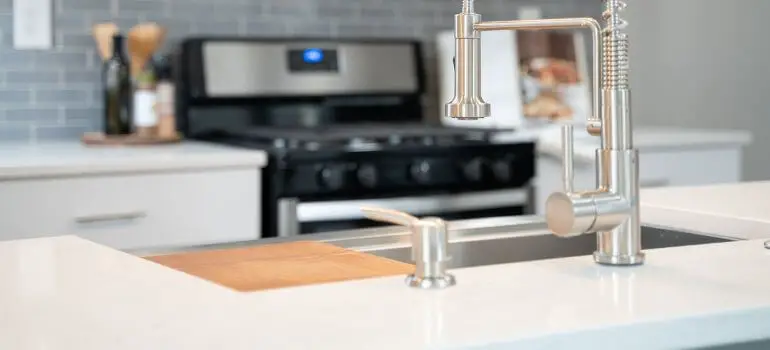In the bustling world of kitchen design, every detail matters, and the size of your sink is no exception. When it comes to the choice between a 33-inch sink and a 36-inch sink, the decision can significantly impact both the functionality and aesthetics of your kitchen. Let’s dive into the nuances of each size to help you make an informed choice tailored to your needs.
Introduction
Importance of Choosing the Right Sink Size
Your kitchen is not just a place to cook; it’s the heart of your home. Selecting the right sink size is crucial for ensuring smooth workflow and complementing your kitchen’s design. Among the myriad options available, the battle often boils down to 33 vs 36-inch sinks.
Overview of 33 vs 36 Inch Sinks
Before delving into the details, let’s have a quick overview of the two contenders. A 33-inch sink is a popular choice for compact kitchens, while a 36-inch sink offers more generous proportions. Each has its merits, but which one is the perfect fit for your kitchen? Let’s find out.
Size Matters: Understanding the Dimensions
Explaining the Physical Dimensions of 33-Inch Sinks
The 33-inch sink, a versatile option, strikes a balance between functionality and space-saving. With a width of 33 inches, it fits seamlessly into most kitchen layouts, making it an ideal choice for smaller spaces.
Highlighting the Differences with 36-Inch Sinks
On the other hand, the 36-inch sink caters to those with a penchant for spaciousness. Its larger dimensions provide more room for washing dishes, accommodating oversized cookware, and handling multiple tasks simultaneously. However, it’s crucial to assess how these dimensions align with your kitchen’s layout.
Kitchen Layout and Sink Selection

How Kitchen Layout Influences Sink Size Choice
The layout of your kitchen plays a pivotal role in determining the ideal sink size. In compact kitchens, a 33-inch sink might be a game-changer, maximizing space efficiency. In larger kitchens, a 36-inch sink can serve as a centerpiece, offering ample workspace.
Pros and Cons of 33-Inch Sinks in Different Layouts
In smaller kitchens, a 33-inch sink can create a cozy and efficient workspace. However, it may pose challenges when dealing with large pots or pans. Consider whether the size aligns with your cooking and cleaning habits.
Pros and Cons of 36-Inch Sinks in Different Layouts
While a 36-inch sink provides abundant space, it might dominate a smaller kitchen, making it feel cramped. In more expansive layouts, it shines, offering a luxurious and functional centerpiece. Assess the balance between aesthetics and practicality in your kitchen.
Functionality: Workspaces and Usage
Analyzing Workspace in 33-Inch Sinks
The 33-inch sink, though smaller, can offer sufficient workspace for daily kitchen tasks. It encourages efficiency but requires thoughtful organization to handle larger items.
Examining Workspace in 36-Inch Sinks
The 36-inch sink, with its expansive dimensions, provides a generous workspace. This is particularly beneficial for households with extensive cooking needs or those who frequently entertain guests.
Matching Sink Size with Cooking and Cleaning Habits
Consider your daily routine – do you often find yourself juggling multiple pots and pans? Or are you more inclined to quick and efficient cleanups? Tailoring your sink size to match your habits ensures a seamless kitchen experience.
Design Aesthetics: Finding the Perfect Fit
Discussing the Visual Impact of 33-Inch Sinks
In kitchen design, aesthetics are paramount. The 33-inch sink, being more compact, can blend seamlessly with various design styles. Its understated presence allows other elements to take the spotlight.
Discussing the Visual Impact of 36-Inch Sinks
The 36-inch sink, with its commanding presence, can become the focal point of your kitchen. It adds a touch of luxury and grandeur, making it an excellent choice for those who prioritize visual impact.
Integrating Sink Size with Overall Kitchen Design
Harmony in design is key. Whether you opt for a 33 or 36-inch sink, ensure it complements the overall aesthetic of your kitchen. The sink should seamlessly integrate into the design, enhancing the visual appeal.
Materials Matter: Sink Material Considerations
Exploring Materials Available for 33-Inch Sinks
The material of your sink contributes to its durability and maintenance. Common materials for 33-inch sinks include stainless steel, cast iron, and composite granite. Each material has its unique characteristics, influencing both aesthetics and functionality.
Exploring Materials Available for 36-Inch Sinks
Similarly, 36-inch sinks are available in various materials. The choice between stainless steel, fireclay, or composite materials depends on your preferences and maintenance considerations. A well-informed decision ensures longevity and satisfaction.
How Material Choice Affects Durability and Maintenance
Consider the level of maintenance you are willing to undertake. Stainless steel may be more resistant to stains, but fireclay offers a timeless aesthetic. Choose a material that aligns with your lifestyle and cleaning preferences.
Budget Considerations
Cost Differences Between 33 and 36-Inch Sinks
While the allure of a larger sink may be tempting, it’s essential to weigh the financial implications. 36-inch sinks, generally being larger, might come with a higher price tag. Consider your budget and whether the additional cost aligns with your priorities.
Long-Term Investment Factors to Consider
Think of your sink as a long-term investment. A high-quality, durable sink can withstand daily use and the test of time. Factor in not just the initial cost but also the potential savings in maintenance and replacement over the years.
Installation Challenges
Addressing Potential Installation Issues with 33-Inch Sinks
Smaller sinks may present fewer installation challenges. However, it’s crucial to ensure a proper fit within your existing countertop space. Consult with a professional installer to address any potential issues.
Addressing Potential Installation Issues with 36-Inch Sinks
The larger dimensions of a 36-inch sink may require adjustments to your kitchen layout. Be prepared for potential modifications, such as cutting into the countertop or adjusting cabinetry, to accommodate the larger size.
Customer Reviews and Satisfaction
Analyzing Customer Feedback on 33-Inch Sinks
Customer reviews provide valuable insights into the real-world performance of sinks. Look for reviews that align with your priorities, whether it’s durability, ease of maintenance, or aesthetic appeal.
Analyzing Customer Feedback on 36-Inch Sinks
Similarly, explore customer feedback for 36-inch sinks. Pay attention to any recurring themes, both positive and negative, to make an informed decision based on the experiences of others.
The Trend Factor: What’s Hot in Kitchen Design
Current Trends in Sink Size Preferences
Kitchen design trends evolve, and sink sizes are no exception. Stay informed about current preferences to ensure your choice aligns with both your personal taste and broader design trends.
Future Predictions for Sink Sizes
As technology and design continue to advance, keep an eye on future predictions for sink sizes. Choosing a size that stands the test of time ensures your kitchen remains stylish and functional for years to come.
Conclusion
In the eternal debate of 33 vs 36-inch sinks, the answer lies in understanding your unique needs and preferences. Whether you prioritize space efficiency, expansive work areas, or visual impact, the perfect sink size is a personal choice. Consider the layout of your kitchen, your daily habits, and the aesthetic you desire. By doing so, you’ll not only enhance the functionality of your kitchen but also create a visually appealing space that reflects your style.
FAQs
In smaller kitchens, a 33-inch sink is often the preferred choice. Its compact dimensions maximize workspace without overwhelming the limited area.
Generally, yes. The larger size and potentially more luxurious materials of a 36-inch sink may come with a higher price tag compared to a 33-inch sink.
While possible, installing a 36-inch sink in an existing kitchen may require modifications to accommodate the larger size. Consult with a professional installer for the best approach.
Absolutely. The material of your sink significantly impacts its durability. Stainless steel offers resilience against stains, while fireclay provides a classic aesthetic with proper care.
Maintaining a larger sink may require extra effort. Ensure proper cleaning and maintenance routines to keep your 36-inch sink looking pristine over time.



